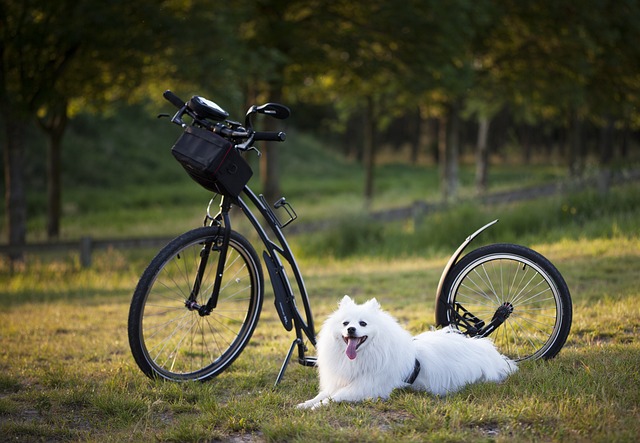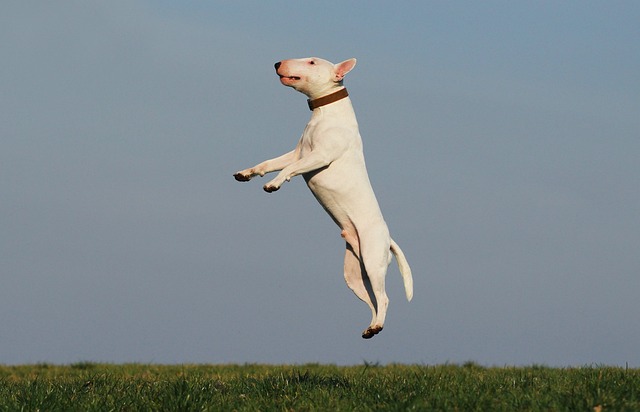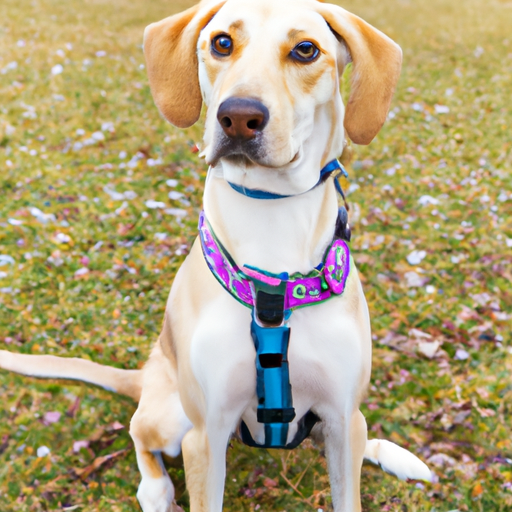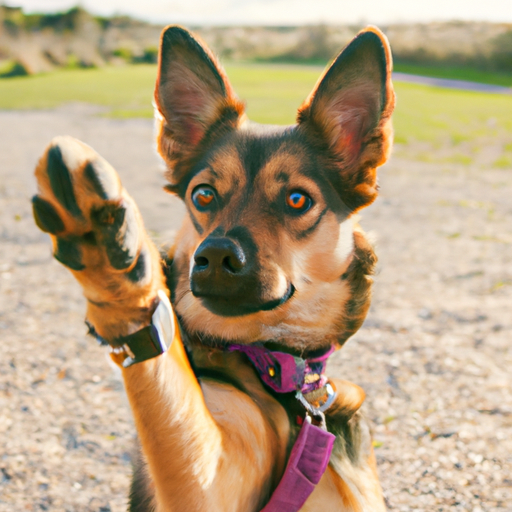
In this article, we will explore some effective methods and techniques that you can use to train your dog to obey simple commands such as sit, stay, and come. You will learn step-by-step instructions on how to teach these commands in a friendly and rewarding way, ensuring that your furry friend is engaged and motivated to learn. By understanding the principles of positive reinforcement and consistency, you will be able to successfully train your dog to follow these basic commands, leading to a well-behaved and obedient pet. So, let’s get started and empower you with the knowledge and skills to train your dog effectively!
The Importance of Teaching Basic Commands
Building a Strong Foundation of Communication
Teaching basic commands to your dog is essential for establishing a strong foundation of communication. Dogs are highly social animals who rely on clear communication to understand what is expected of them. By teaching them commands like sit, stay, and come, you are providing them with a language that they can understand and respond to.
When your dog knows the basic commands, it becomes easier to communicate and guide their behavior. This is especially important in situations where you need your dog to listen and follow instructions, such as when crossing a busy road or interacting with other dogs. By teaching them basic commands, you are setting them up for success in various situations.
Ensuring Safety and Control
Another crucial aspect of teaching basic commands is ensuring the safety and control of your dog. Basic commands like sit, stay, and come can be lifesaving in certain situations. For example, if your dog is about to run into a dangerous situation, a well-trained recall command can prevent accidents or injuries.
Moreover, having control over your dog through basic commands allows you to keep them safe from potential hazards. It allows you to prevent them from chasing after squirrels, approaching aggressive dogs, or running away in a public place.
Establishing Trust and Bond with Your Dog
Teaching basic commands to your dog is also an opportunity to establish trust and bond with them. Dogs are social animals that thrive on positive interactions and engagement with their owners. When you train your dog and they successfully execute the commands, it creates a sense of accomplishment for both of you.
Training sessions also provide an opportunity for positive reinforcement and rewards, which strengthen the bond between you and your dog. When your dog realizes that they can rely on you for guidance and praise, it enhances the trust they have in you and deepens your relationship.
Understanding Your Dog’s Learning Style
Recognizing Individual Differences
Just like humans, dogs have different learning styles and preferences. Some dogs may respond well to verbal commands, while others may be more visual learners and respond better to hand signals. It’s important to recognize and understand your dog’s learning style to tailor your training methods to their specific needs.
Observe your dog’s behavior and cues during training sessions to determine what methods work best for them. Pay attention to their response to different stimuli and adjust your training techniques accordingly. By understanding your dog’s individual differences, you can make the training process more effective and enjoyable for both of you.
Using Positive Reinforcement Techniques
Positive reinforcement is a highly effective training technique that focuses on rewarding desired behaviors rather than punishing unwanted ones. By using positive reinforcement, you can motivate your dog and encourage them to repeat the desired behavior.
During training sessions, reward your dog with treats, praise, or play when they successfully execute a command. This positive association with the command reinforces their understanding and encourages them to continue obeying it in the future. Consistency and timing are key when using positive reinforcement techniques to ensure your dog understands which behavior is being rewarded.
Tailoring Training Methods to Your Dog’s Needs
Every dog is unique, and what works for one may not work for another. It’s important to tailor your training methods to your dog’s specific needs and capabilities. Some dogs may require more repetition and practice, while others may catch on quickly.
Pay attention to your dog’s progress and adjust your training methods accordingly. Be patient and understand that training takes time and consistency. If a certain training technique doesn’t seem to be working, don’t hesitate to try a different approach. Finding the right training method for your dog will increase the effectiveness of the training process.

Teaching the ‘Sit’ Command
Start with Basic Attention Training
Before teaching the ‘sit’ command, it’s important to establish basic attention training with your dog. This means teaching them to focus and look at you when you give a command.
Start by holding a treat in your hand and bringing it close to your dog’s nose. Slowly move your hand up and towards the back of their head, which will cause their nose to follow the treat. As their head goes back, their bottom will naturally lower into a sitting position. When they are sitting, say the word “sit” and immediately give them the treat as a reward.
Repeat this process multiple times, gradually saying the command word before performing the hand motion. Eventually, your dog will associate the word “sit” with the action of sitting and will be able to follow the command without the need for a treat every time.
Using Food Incentives and Hand Signals
In the initial stages of teaching the ‘sit’ command, it’s beneficial to use food incentives and hand signals to reinforce the behavior. Hold a treat in your hand and show it to your dog, then slowly move it above their head. As their head goes back to follow the treat, their bottom will naturally lower into a sitting position.
As soon as their bottom touches the ground, say the word “sit” and give them the treat as a reward. Repeat this process, gradually removing the treat from your hand and using only the hand signal. This hand signal can be a simple upward movement of your hand or a specific gesture that you choose.
Gradually Removing Food Rewards
Once your dog understands the meaning of the ‘sit’ command and can consistently perform it with the hand signal, you can gradually start reducing the frequency of food rewards. Instead of giving a treat every time, randomly reward your dog with treats and praise to reinforce the behavior.
It’s important to continue providing occasional rewards even after your dog has mastered the ‘sit’ command. This helps to maintain their motivation and ensure they continue to obey the command in different situations. Remember, consistency and reinforcement are key to successful training.
Teaching the ‘Stay’ Command
Introducing the Concept of Stay
The ‘stay’ command is particularly important for ensuring the safety and control of your dog in various situations. Introduce the concept of ‘stay’ by first teaching your dog to hold a position for a short period.
Start by giving the ‘sit’ command to your dog. Once they are in the sitting position, hold your hand in front of their face and say the word “stay.” Hold this position for a few seconds, then reward your dog with treats and praise. Gradually increase the duration of the ‘stay’ command, making sure to reward your dog after each successful stay.
Practice in Controlled Environments
When teaching the ‘stay’ command, it’s important to start in controlled environments with minimal distractions. Begin by practicing in a quiet room with no other people or pets around. This allows your dog to focus solely on the command and helps them understand what is expected of them.
Gradually introduce more distractions as your dog becomes more comfortable with the ‘stay’ command. For example, have someone walk by in the background or drop a toy nearby. If your dog breaks their stay, calmly bring them back to the original position and repeat the command. Consistency and repetition are key to reinforcing the ‘stay’ behavior.
Gradually Increase Distance and Duration
Once your dog is proficient at staying in a controlled environment, you can start increasing the distance and duration of the ‘stay’ command. Begin by taking a small step back from your dog while they are in the stay position, then return to them and reward them for staying.
Gradually increase the distance between you and your dog, as well as the duration of the stay. Remember to reward your dog after every successful stay and to return to them before releasing them from the command. This helps to reinforce the behavior and maintain their focus and compliance.

Teaching the ‘Come’ Command
Building a Reliable Recall
The ‘come’ command, also known as recall, is one of the most important commands to teach your dog. A reliable recall allows you to bring your dog back to you in any situation, ensuring their safety and control.
Start by calling your dog’s name in an enthusiastic tone, then immediately follow it with the word “come” while opening your arms wide to encourage them to approach you. When your dog comes to you, reward them with treats and praise.
Repeat this process in a controlled environment with minimal distractions. Gradually increase the distance between you and your dog, rewarding them every time they come to you. Consistency and positive reinforcement are crucial in teaching a reliable recall.
Using a Long Leash and Positive Rewards
To reinforce the ‘come’ command, you can use a long leash to set your dog up for success. Attach a long training leash to your dog’s collar or harness, allowing them enough freedom to move around while still maintaining control.
Call your dog’s name followed by the command “come” and gently pull on the leash to guide them towards you. When they reach you, reward them with treats, praise, and play. This helps to reinforce the behavior and builds a positive association with the ‘come’ command.
Proofing the Command in Different Environments
Once your dog is proficient at ‘come’ in controlled environments, it’s important to proof the command in different environments with increasing distractions.
Practice the ‘come’ command in different locations, such as the park or a friend’s backyard. Gradually increase the distractions, such as other dogs, people, or toys. Remember to reward your dog every time they come to you, even in challenging situations.
Consistency and patience are key when teaching the ‘come’ command. It may take time for your dog to fully understand and respond reliably, so continue to reinforce the behavior and practice regularly.
Common Challenges and Troubleshooting
Addressing Distractions and Lack of Focus
One common challenge in training basic commands is dealing with distractions that may cause your dog to lose focus. If your dog gets easily distracted, start by practicing in a controlled environment with minimal distractions. As your dog becomes more proficient, gradually introduce distractions and reinforce the command in those situations.
Another challenge may be a lack of focus from your dog. Dogs are sensitive to their owner’s energy, so it’s important to remain calm and positive during training sessions. Use high-value treats or toys to keep your dog engaged and motivated. Break the training sessions into shorter, more frequent sessions to prevent boredom or fatigue.
Dealing with Fear or Anxiety
Some dogs may experience fear or anxiety during training sessions, making it challenging for them to learn and obey commands. It’s important to create a safe and positive environment for your dog during training.
Start by using gentle and encouraging tones to reassure your dog. Use positive reinforcement techniques and rewards that your dog finds motivating. If your dog shows signs of fear or anxiety, such as trembling or avoiding eye contact, take a step back and reassess the training approach. Seek professional help if needed to address any underlying fear or anxiety issues.
Seeking Professional Help When Needed
If you’re facing difficulties in teaching your dog basic commands or addressing specific behavioral issues, it’s important to seek professional help. Trained dog trainers or behaviorists can provide guidance and tailor training techniques to your dog’s individual needs.
Professional help can be particularly beneficial if your dog exhibits aggressive behavior or has specific training challenges that require specialized expertise. Remember, it’s always better to seek professional help early on to address issues before they become more difficult to manage.

Consistency and Patience: Key Factors in Training
Establishing a Consistent Routine
Consistency is one of the most crucial factors in training your dog to obey basic commands. Dogs thrive on routine and repetition, so it’s important to establish a consistent training schedule.
Set aside dedicated time each day for training sessions, focusing on one command at a time. Keep the sessions short, around 10 to 15 minutes, to maintain your dog’s focus and enthusiasm. Consistency in training will help your dog understand what is expected of them and make the learning process more efficient.
Being Patient and Avoiding Frustration
Teaching your dog basic commands can be a rewarding but sometimes challenging process. It’s important to remain patient and avoid frustration during training sessions.
Dogs are sensitive to their owner’s emotions, so maintaining a calm and positive demeanor is crucial. Remember that training takes time and repetition, and your dog may not learn or execute commands perfectly right away. Celebrate small achievements and progress, and be patient with your dog as they learn and grow.
Celebrating Small Achievements
Training your dog to obey basic commands is a journey filled with small achievements and progress. Celebrate these achievements to reinforce positive behavior and motivate your dog.
Each time your dog successfully follows a command, reward them with treats, praise, belly rubs, or their favorite toy. Positive reinforcement helps to establish a positive association with the command and encourages your dog to continue obeying it.
Expanding Your Dog’s Training Repertoire
Teaching Advanced Commands and Tricks
Once your dog has mastered the basic commands, you can expand their training repertoire by teaching them advanced commands and tricks. This not only provides mental stimulation but also strengthens the bond between you and your dog.
From commands like “lie down” and “heel” to tricks like “roll over” and “play dead,” advanced training keeps your dog engaged and challenged. Use the same positive reinforcement techniques and consistency as you did with the basic commands.
Engaging in Mental Stimulation Activities
In addition to training commands and tricks, engaging your dog in mental stimulation activities is important for their overall well-being. Mental stimulation keeps their minds sharp and helps prevent boredom and destructive behaviors.
Activities such as puzzle toys, scent games, and obedience challenges not only provide mental enrichment but also strengthen the bond between you and your dog. Incorporate these activities into your daily routine to keep your dog mentally stimulated and fulfilled.
Continuously Reinforcing Training
Training your dog is an ongoing process that requires continuous reinforcement. Even after your dog has mastered the basic commands and advanced tricks, it’s important to periodically review and reinforce their training.
Schedule regular training sessions to ensure your dog retains the knowledge and skills they have learned. Repetition helps to solidify the commands in your dog’s memory and strengthens their obedience skills. By continuously reinforcing their training, you can maintain a well-behaved and obedient dog.

Maintaining Obedience Training
Regularly Practicing Commands
To maintain your dog’s obedience training, it’s important to regularly practice the basic commands. Set aside dedicated time each week to reinforce the commands and ensure that your dog remembers and obeys them.
During these practice sessions, focus on one command at a time and gradually introduce distractions. Reinforce the desired behavior with rewards and praise, and review any areas where your dog may need extra practice.
Reinforcing Training in Everyday Situations
Obedience training should extend beyond formal training sessions and be applied in everyday situations. Use the basic commands during walks, when interacting with other dogs or people, and in any situation where your dog’s behavior needs to be controlled.
By consistently reinforcing the commands in real-life situations, you are helping your dog generalize their training and apply it in various contexts. This helps to ensure that your dog remains obedient and well-behaved in any situation.
Enlisting the Whole Family’s Support
Consistency is key in maintaining obedience training, and enlisting the support of the whole family is crucial. Ensure that everyone in the household uses the same commands and training methods.
Make sure everyone understands the importance of consistency and rewards your dog for following the commands. Consistency among family members helps your dog understand what is expected of them and prevents confusion or mixed signals.
Conclusion
Teaching your dog to obey basic commands like sit, stay, and come is a fundamental aspect of responsible dog ownership. It not only ensures their safety and control but also allows you to establish a strong bond and trust with your furry companion.
Understanding your dog’s learning style, using positive reinforcement techniques, and tailoring the training methods to their needs are essential for effective training. By following a step-by-step approach and addressing any common challenges that may arise, you can successfully teach your dog these basic commands.
Remember to remain patient and consistent throughout the training process, celebrating small achievements along the way. Expanding your dog’s training repertoire and continuously reinforcing their training will further strengthen their obedience skills and deepen your relationship.
By maintaining obedience training and enlisting the whole family’s support, you can ensure that your dog remains well-behaved in any situation. Enjoy the fruits of your training efforts and continue to learn and grow with your dog as you embark on this exciting journey together.


